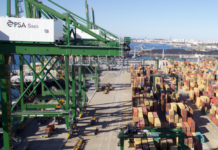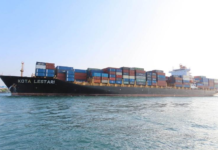
Market sentiment turned positive for the first time since September 2022, as the Shanghai Containerized Freight Index (SCFI) recovered mildly in the week ended 2 April, according to Linerlytica’s latest report.
The rebound was supported by improved rates from East Asia to the Persian Gulf and South America.
Linerlytica remarked that there is rising conviction around a mid-April rate increase on some key routes.
Linerlytica said, “Carriers are making a last-ditch effort to raise spot rates on the Transpacific ahead of the 1 May contract season with rates expected to rise by US$500-600/FEU.”
The SCFI rebounded marginally last week on improved rates in the Middle East and Latin America on the back of stronger demand but further rate increases in April will provide carriers with much needed relief after spot rates dropped by over 80% since last year.
Carriers’ resolve to maintain pricing discipline will continue to be tested in the coming months as charter rates and resale prices continue to rise, with vessel availability declining rapidly and carriers are showing renewed confidence to push ahead with new capacity additions as the summer peak season approaches. New ship deliveries reached a five-year high of 200,267 TEUs in March and are on track to exceed 2.2 million TEUs in 2023.
Supporting the rate rebound is the uptick in port congestion, with Linerlytica noting that about 1.88 million TEUs, or 7.1% of the global fleet, tied up at port anchorages worldwide, compared with 6.8% a week ago.
Particularly, the eastern Mediterranean region, and some North American ports, including Vancouver, Oakland and Houston, saw increased bottlenecks over the past week. Some African ports, such as Cape Town and Damietta, have severe logjams.
In its March report, Maritime Strategies International noted that US and European retailers remain overstocked, especially when rising interest rates have hurt the housing market in those regions, restricting imports of furniture and building materials.
MSI stated that while the decline in European imports from East Asia stood at 10.8% in January, a reduction from the last four months of 2022, there are more downside risks.
MSI said, “Firstly, inflation is proving to be sticky, thereby not favouring an increase in consumer spending on discretionary goods which would lead to a meaningful decline in retail inventories. Secondly, the European Central Bank is expected to keep hiking interest rates, negatively impacting the already markedly weakened housing market.”
Martina Li
Asia Correspondent





